Parameter Controls
Parameters can participate in dashboard layout through parameter controls. Similar to filters, parameter controls can adjust parameter values, causing charts in the dashboard to change accordingly, displaying different content. 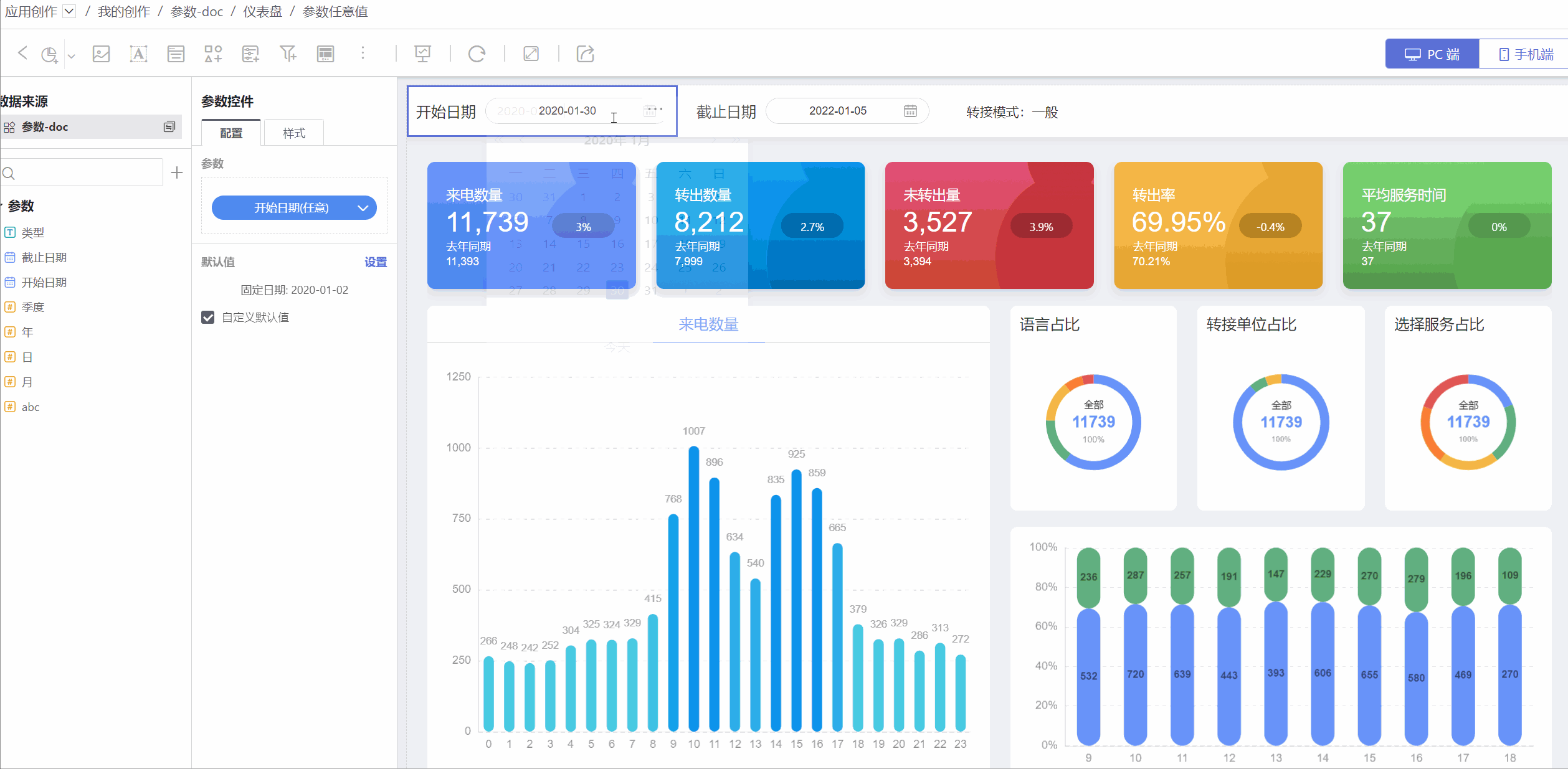
Parameter controls are divided into local parameter controls and application parameter controls, with different control scopes. Local parameter controls only control related charts within the current dashboard, while application parameter controls can control related charts across all dashboards within the application.
Local Parameter Control
Create Parameter Control
Below is an introduction on how to create a local parameter control.
Before using the parameter control, please refer to Parameters to create a new parameter.
Click
New Parameter Control->Parameter Controlicon in the dashboard to add a parameter control to the dashboard.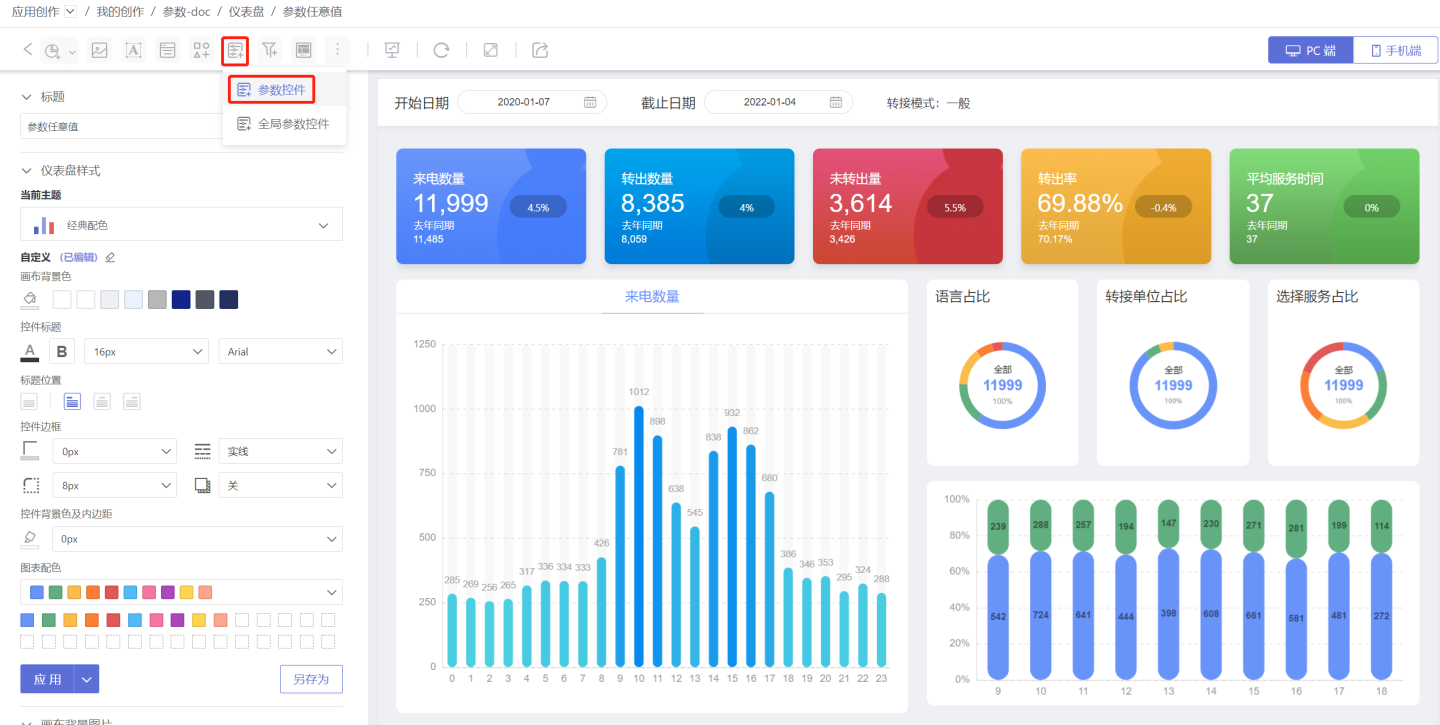
Drag a parameter from the
Parameterslist on the left into the parameter configuration area, and a filter in the form of a parameter will be displayed in the dashboard. Parameters can only be single-selected because a parameter can only have one current value.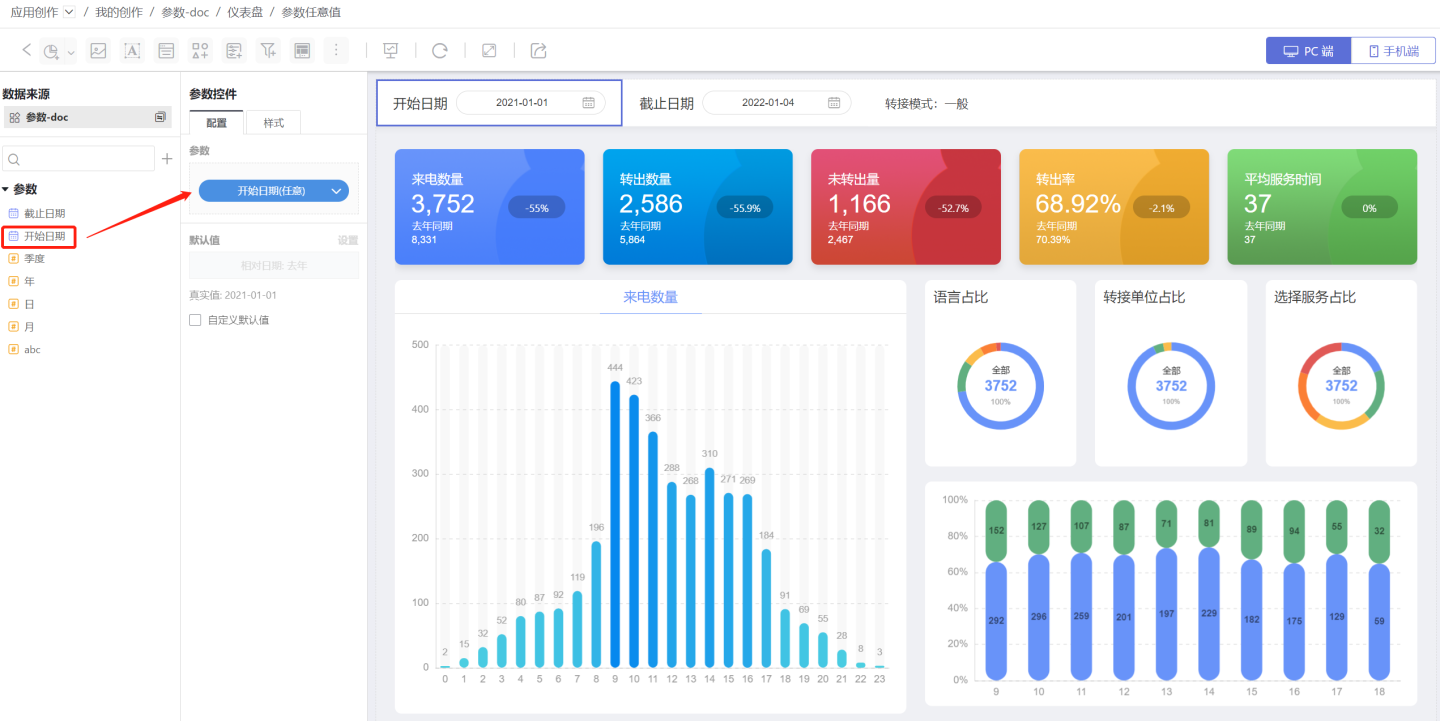
The parameter control supports modifying the default parameter value; check Custom Default Value to modify it.
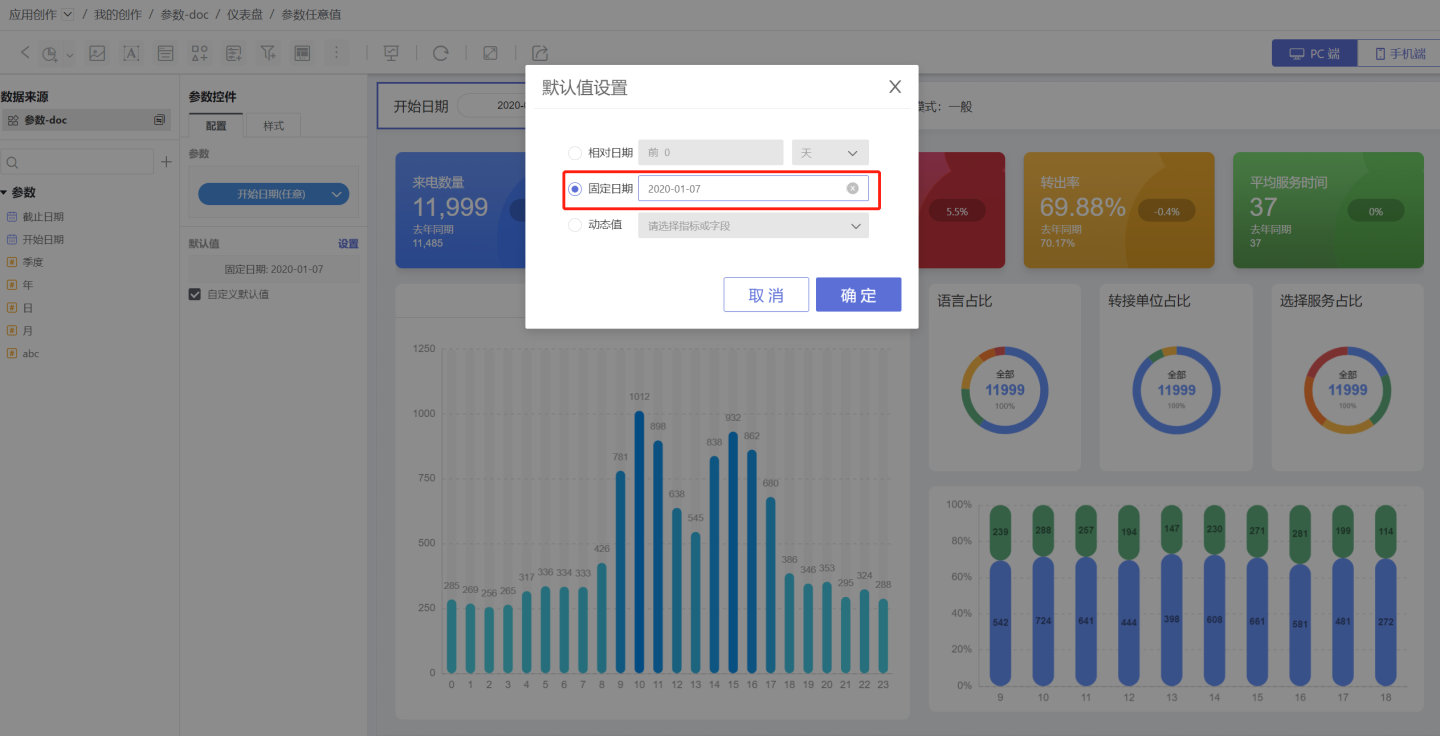
Switch to the
Styletab to set various styles for the parameter control.
After completing the above steps, the parameter control creation is complete. If adjusting the parameter value does not change the chart content, it may be because the chart is not associated with the parameter.
Parameter Association
Parameters need to be associated with charts in order to control the chart content through parameter controls. There are two common association methods as follows.
Association Before Chart Creation
Pre-chart creation association refers to the use of parameters in the dataset when creating a chart. For example, if a dataset uses parameters during Dataset Creation, Row Permissions Setup, New Field Creation, or New Metric Creation, then after the chart is created, it has already established an association with that parameter. Adjusting the parameter control will cause the content of the chart to change accordingly.
Association When Creating Charts
If the dataset used to create the chart does not use parameters, you can associate the chart with parameters through in-chart filters during the chart creation process. As shown in the figure, in the filter for Call Start Time, use a parameter expression for filtering, thus associating the parameter with the chart. When the parameter control changes, the filter value changes, thereby affecting the display of the chart. 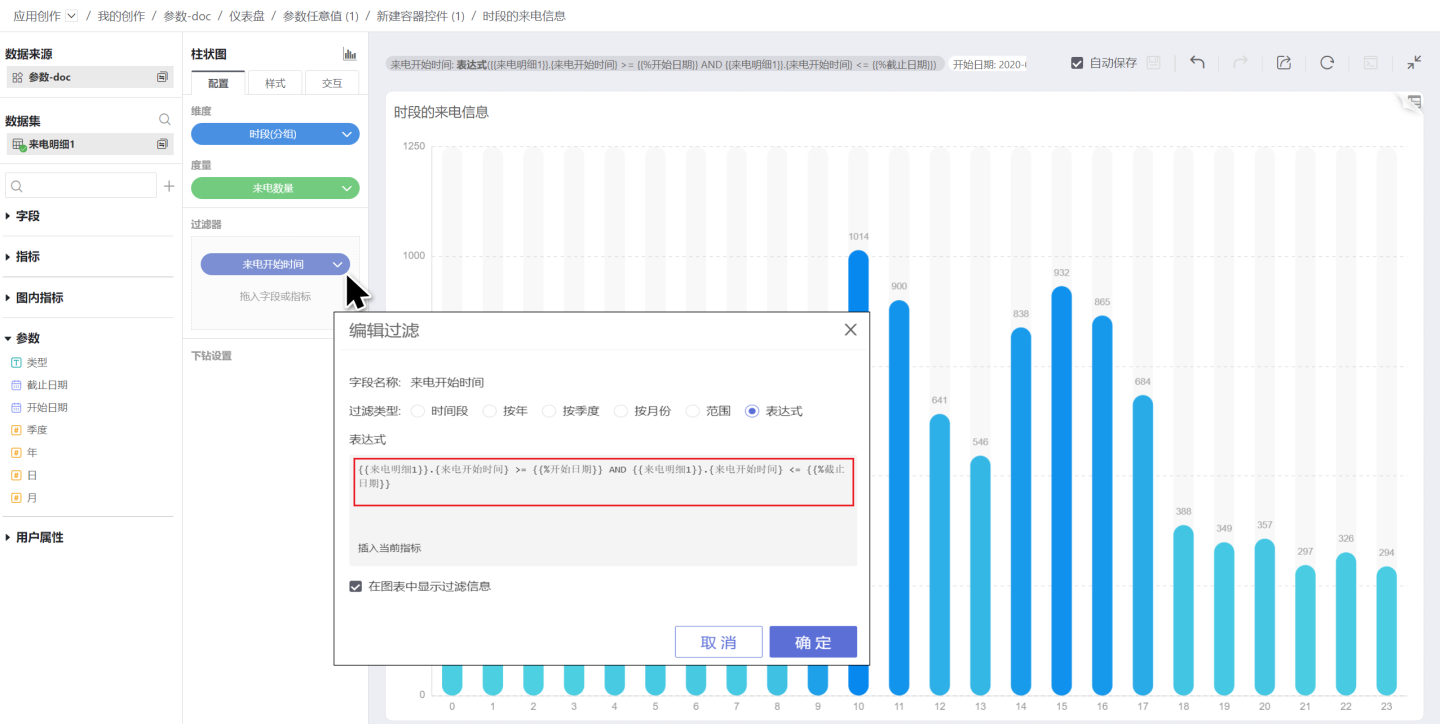
Parameter Control Types
Parameter control types include regular parameter controls, date range parameter controls, and tree parameter controls.
The general parameter control can be applied to text, date, and numeric type parameter controls, and only one parameter can be dragged in at a time, controlling the display of chart data through the parameter value.
The date range parameter control supports dragging in multiple date parameters, using the date range value formed by multiple date parameters to control the display of chart data. The date range parameter will automatically verify to ensure that the subsequent parameter value is greater than the previous parameter value. As shown in the figure, the dashboard displays data between the
Start DateandEnd Date, using the date range parameter control to drag in theStart DateandEnd Dateparameters, the system will automatically restrict theEnd Dateparameter to only select values greater than or equal to theStart Date.
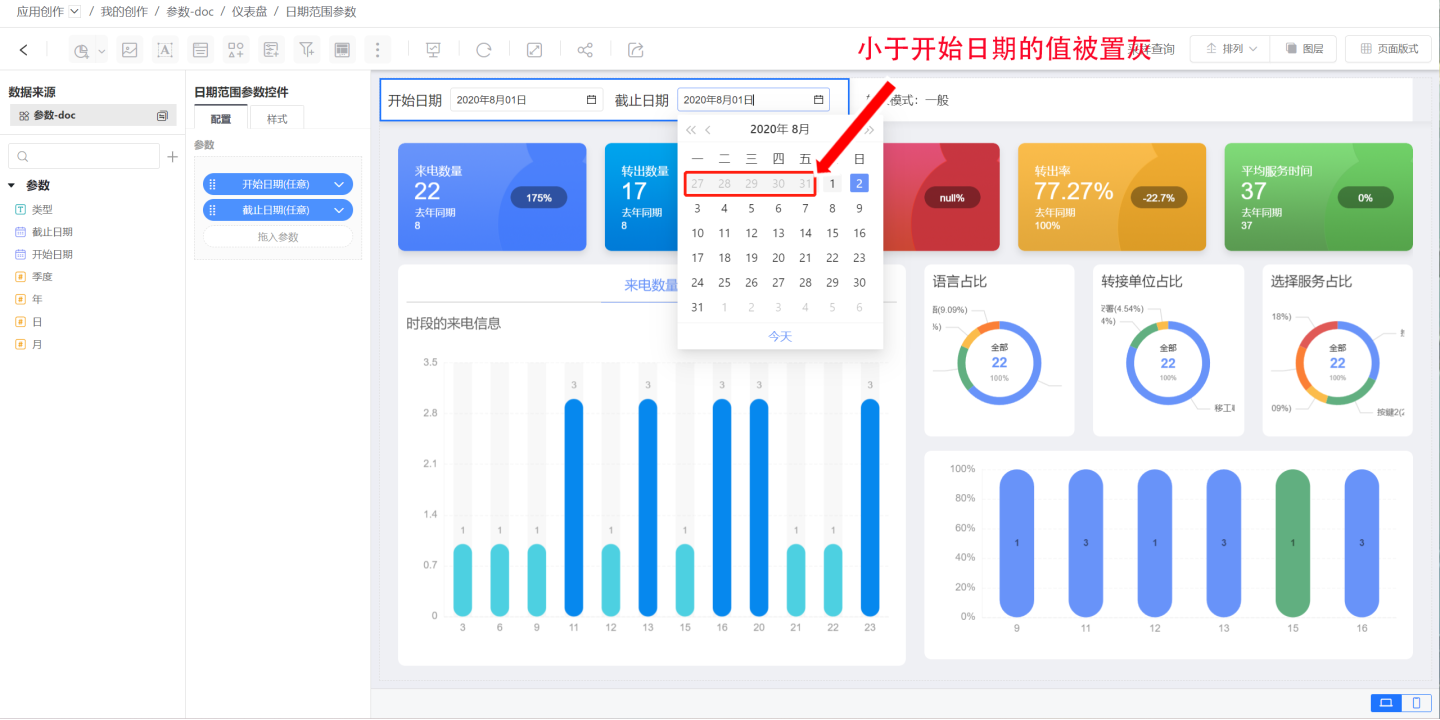
- The tree parameter control is suitable for situations where a single control is used to control multiple parameters, and there is a hierarchical relationship between the multiple parameters. For example,
CompanycontainsDepartment,DepartmentcontainsEmployee; orRegioncontainsProvince, allowing users to more easily locate the specified option when selecting parameter controls.
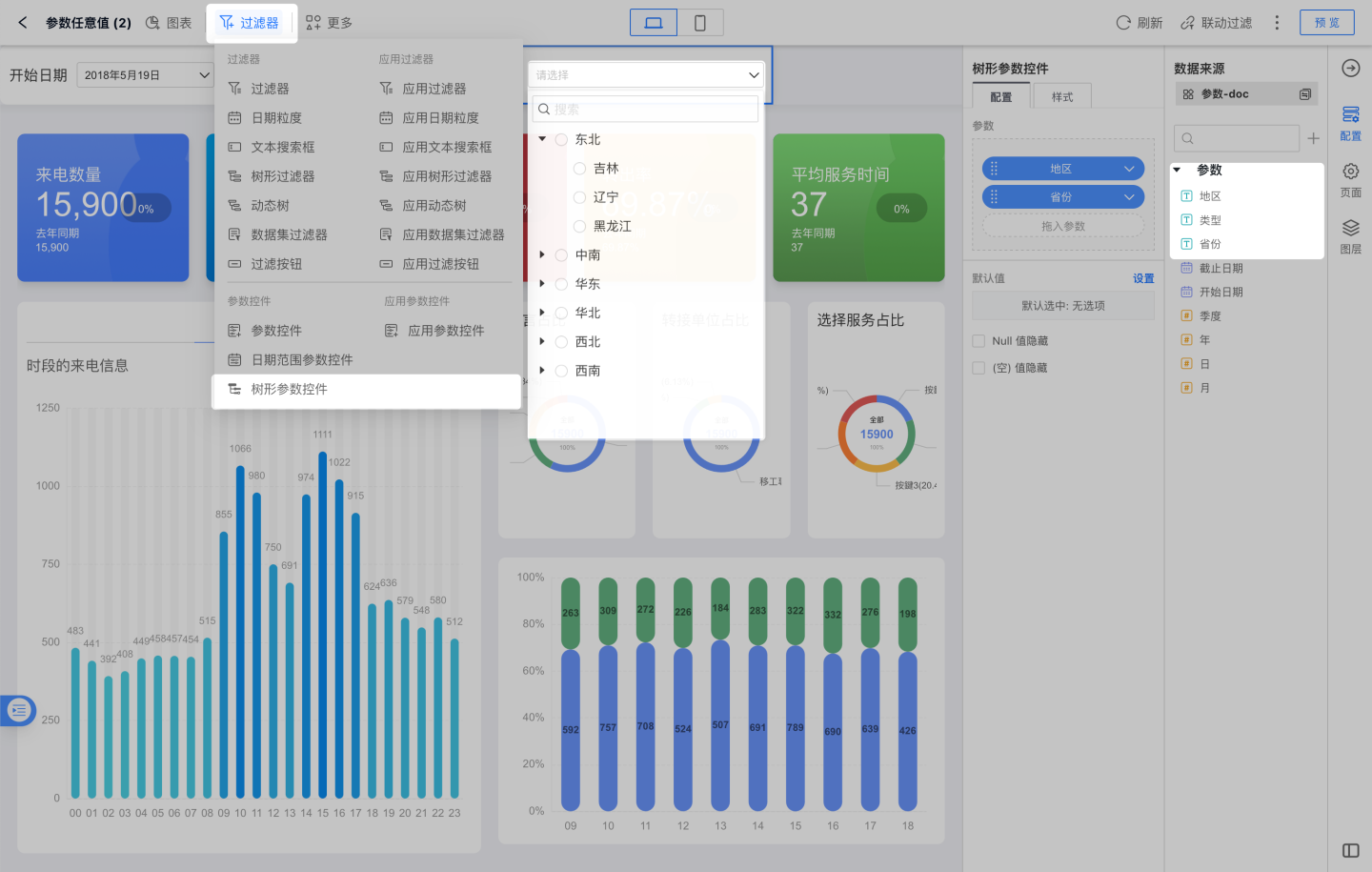
Application Parameter Controls
The creation process for application parameter controls is the same as that for local parameter controls. The difference is that application parameter controls can only be placed at the top of the dashboard, added as a small card in the top-resident global parameter area, with a fixed size and no support for adjustment. The display style is also relatively simple, not supporting tiling, but it does support settings for color/border/rounded corners/text.
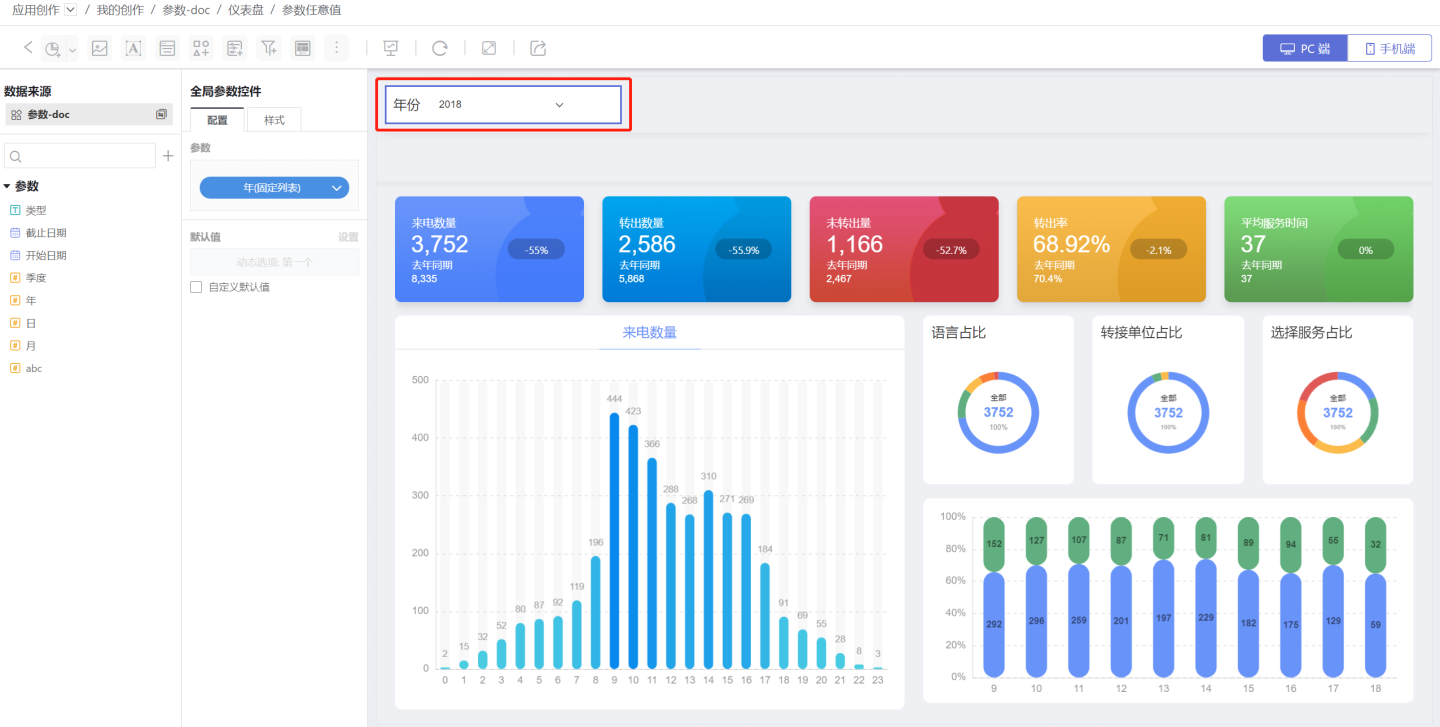
Sidebar Parameter Controls
When the space within the dashboard canvas is limited, you can move the parameter controls to the sidebar. At this time, the parameter controls do not support style modifications. 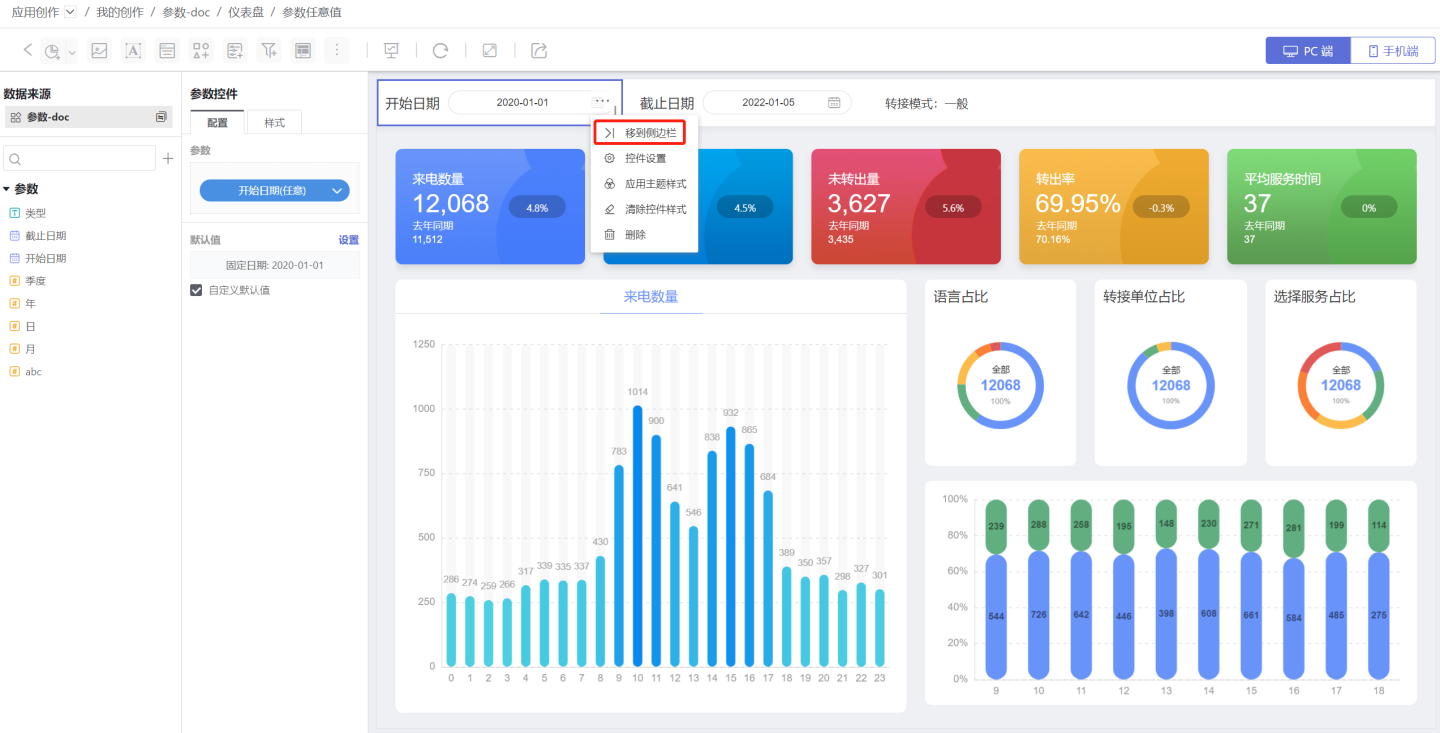
Sidebar parameter controls support moving within the canvas, at which point it is necessary to readjust the position of the controls within the canvas and the control styles.
Tip
Both local parameter controls and application parameter controls support moving to the sidebar.
Parameter Control Association
When multiple parameters use different fields from the same dataset as dynamic allowed values, these parameters are interlinked. In the global settings, drag the parameter controls to establish a hierarchical relationship. When the parent option changes, the child options follow accordingly. 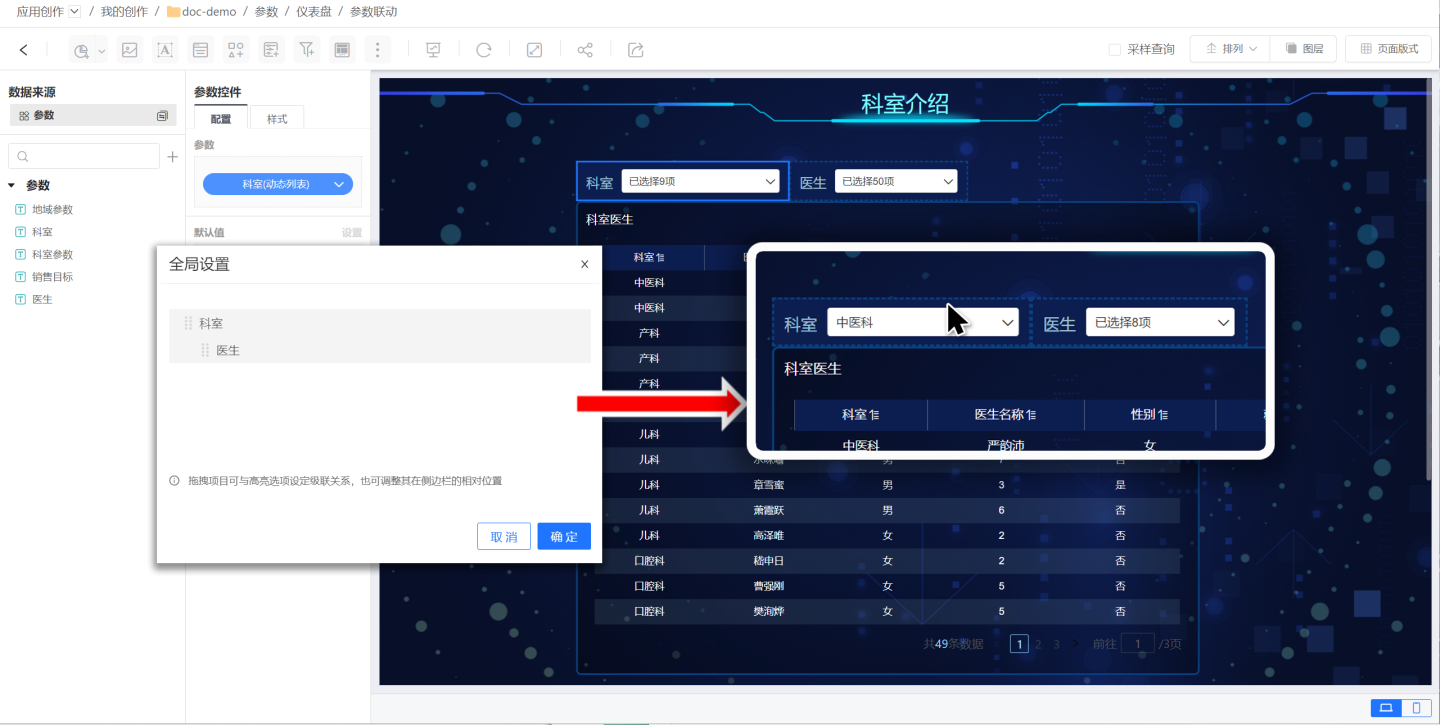
Tip
Only when the allowed values of the parameter are dynamic lists is association supported.
Application Scenarios for Parameter Controls
Parameter controls can achieve the following scenarios.
Scenario 1
Parameter controls can display Field A but actually function based on Field B. Parameters support the configuration of value and display value. In the Dynamic List, Field B can be configured as the value, and Field A as the display value. This way, the parameter control shows the display value (Field A) but actually filters based on the value (Field B).
Scenario 2
A parameter control controls charts created from different datasets. Parameters can be flexibly associated with charts, so it is easy to control charts created from different datasets.
Notes on Parameter Usage
The parameter control for the same parameter can only appear once in a single dashboard, so when using parameter controls, please pay attention:
- Within the same app, a parameter control for the same parameter cannot be both an app parameter control and a local parameter control.
- Within the same dashboard, a parameter control for the same parameter cannot appear simultaneously in both the dashboard and a container.